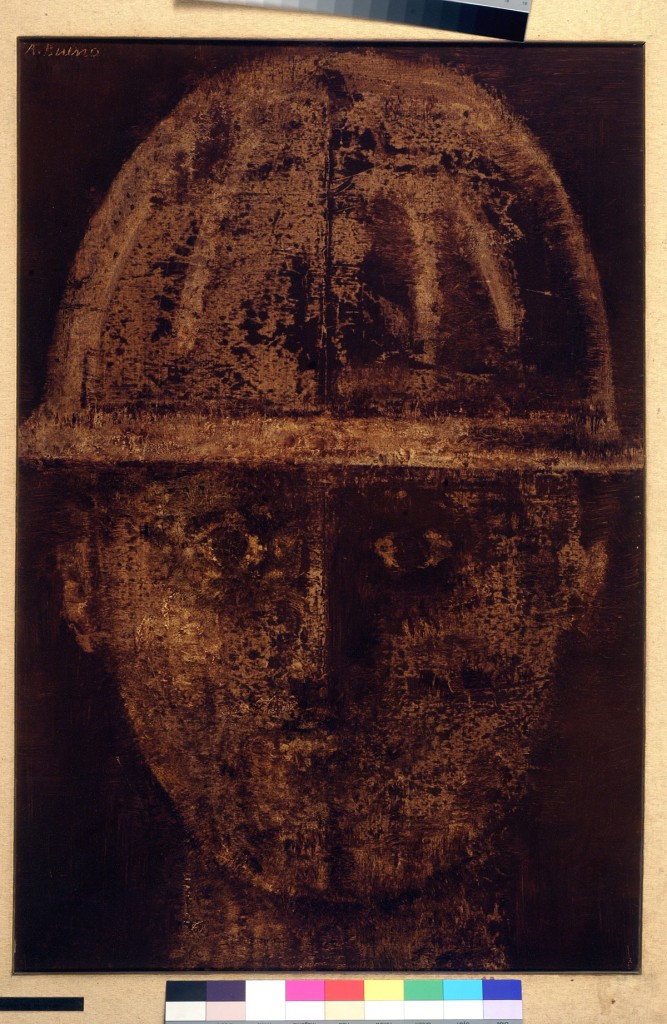After spending his childhood in Spain and approaching the art world in Geneva and Paris, Antonio Bueno made his debut as an artist in Paris, where he exhibited at the Salon des Jeunes. In 1947, he relocated to Italy: here, together with his brother and Annigoni, he founded the Pittori Moderni della Realtà (modern painters of reality) art group. After a journey to the United States, he moved away from a realist and metaphysical track and gave rise to the Gruppo 70 art group in 1962. The following decade will be marked by experimentations and collaborations with the Gruppo 63 art group. In 1969, he left the Gruppo 70 and devoted himself entirely to the theme of female figure; a subject that would absorb him completely. The 1970s were defined by the artist himself as his Neokitsch hiatus. In 1984, the year of his death, he participated for the last time in the Venice Art Biennale, after his two previous experiences in 1956 and 1965.

– title: Minatore di lignite
– date: 1964
– medium: painting, oil on fibreboard
– size: 110×79 cm
– description: Unlike most of the works featured at the Masaccio Painting Awards, which favoured landscape painting, Antonio Bueno submitted the portrait of a lignite miner for the competition held in 1964, winning second prize. The subject is portrayed frontally: the man’s features are minimalised and his face has an exaggerated roundness, typical of Bueno’s signature style. The medium – oil on fibreboard – reflects the production released by the artist around the mid-1970s, besides lending a rarefied atmosphere to the portrait, highlighted by an even dark brown-black shade reminiscent of lignite and mining environments. This work brings to mind the experiments carried out by Bueno in that same period when he relied on a similar technique for monochromatic paintings, in particular the Impronte cycle. As underlined by Filiberto Menna, this cycle comprises a series of countenances that surface from the canvas, or perhaps are disappearing as if they were masks suspended in time, caught in the moment of the artist’s representation.